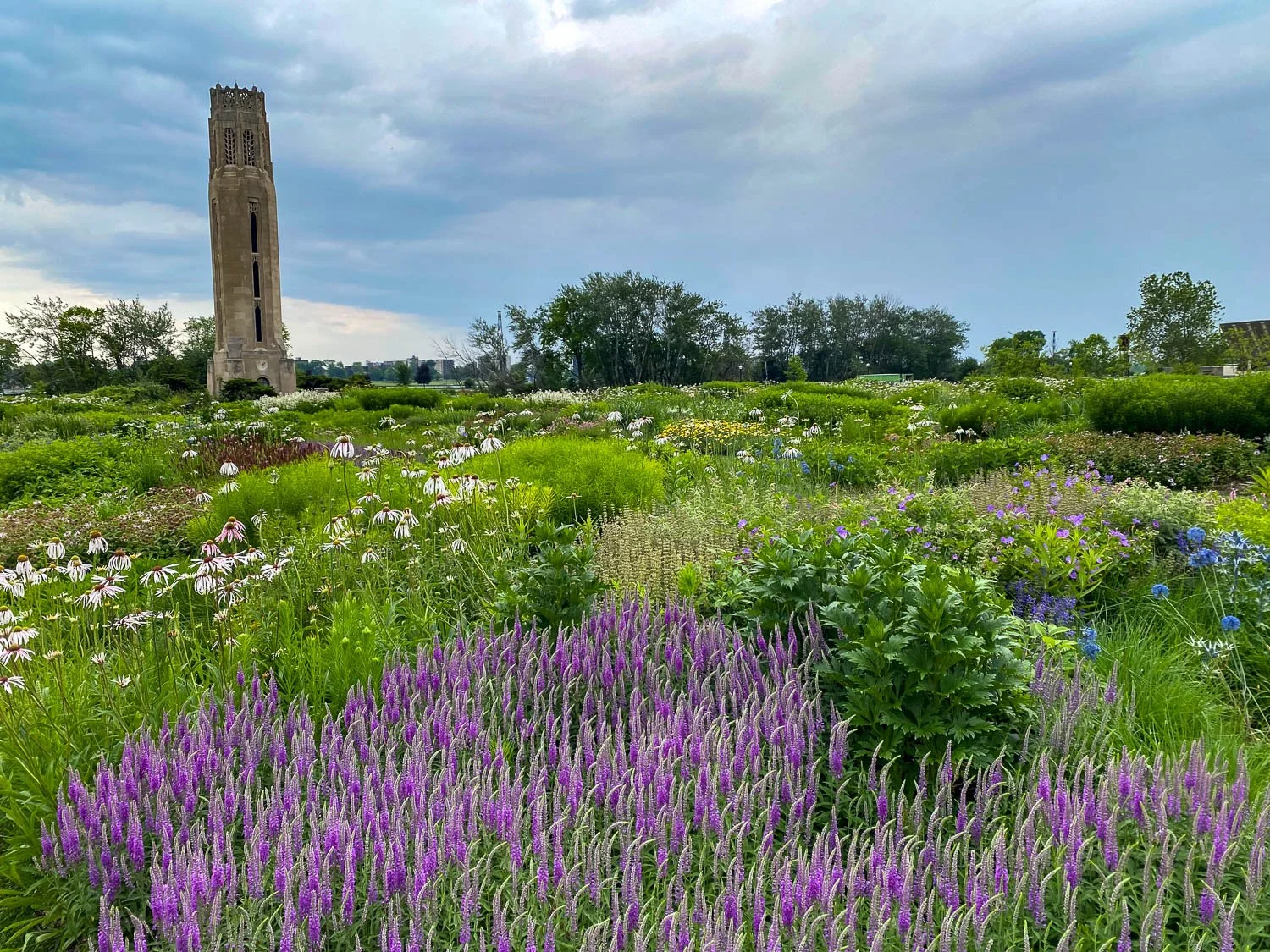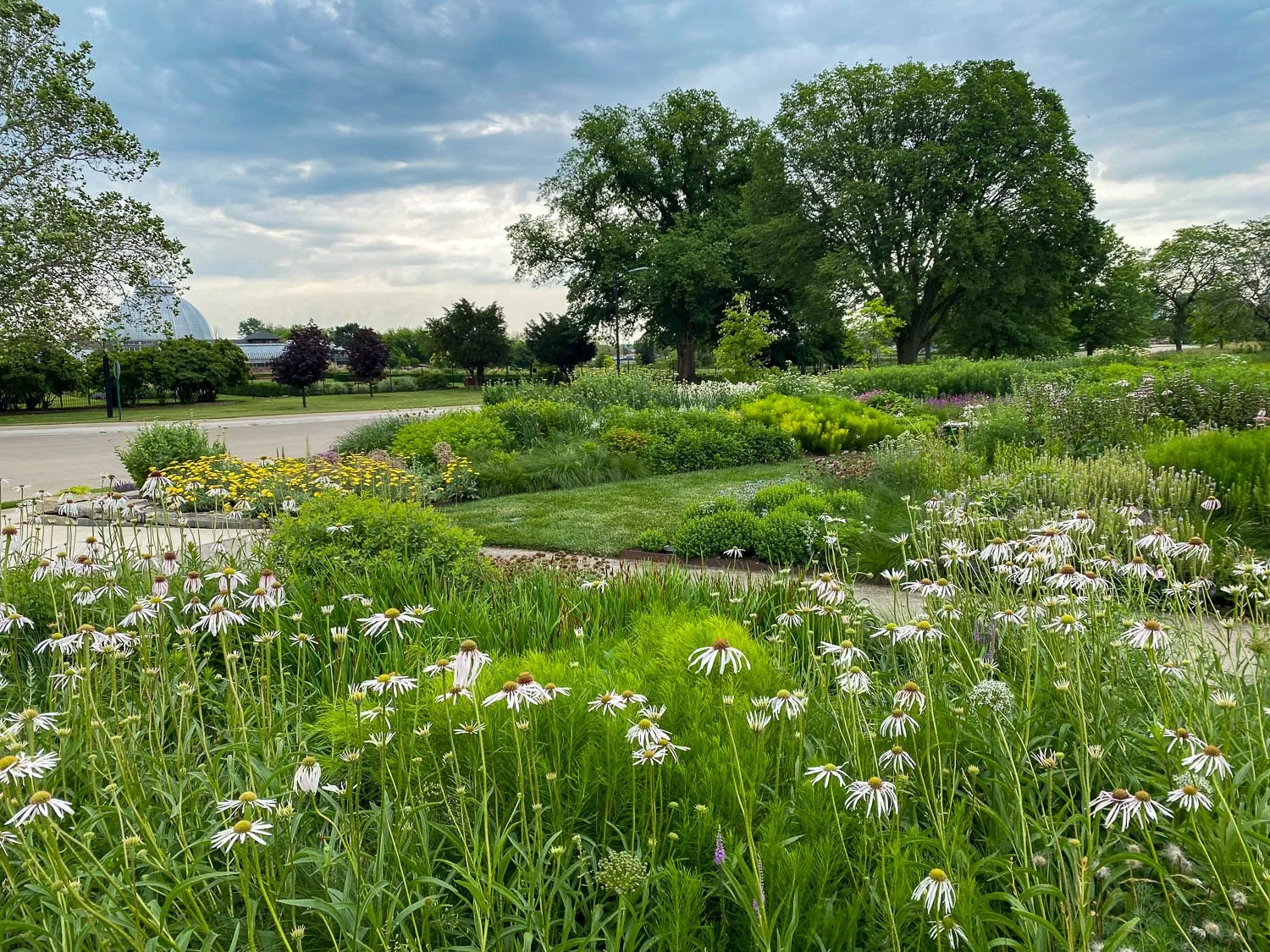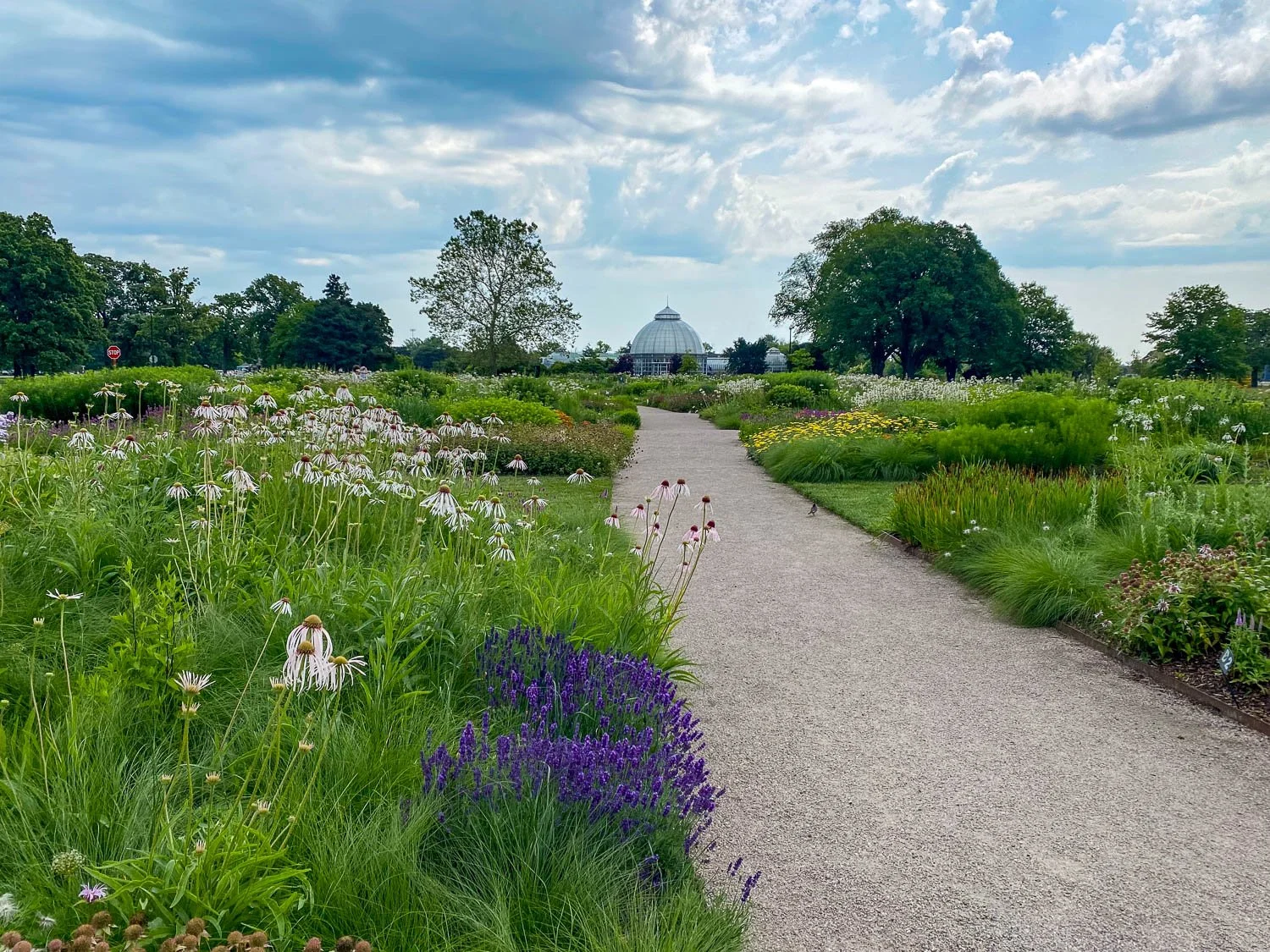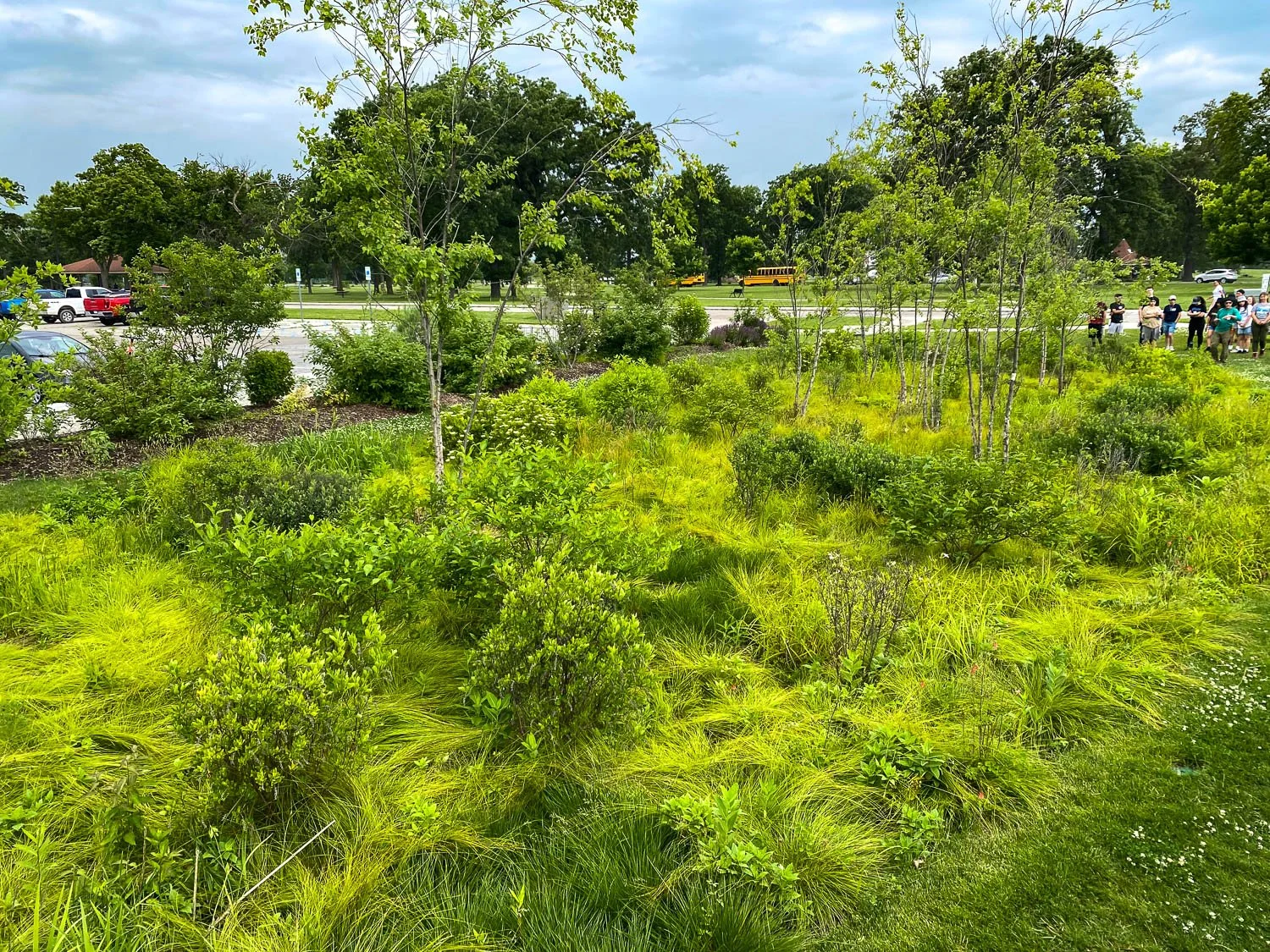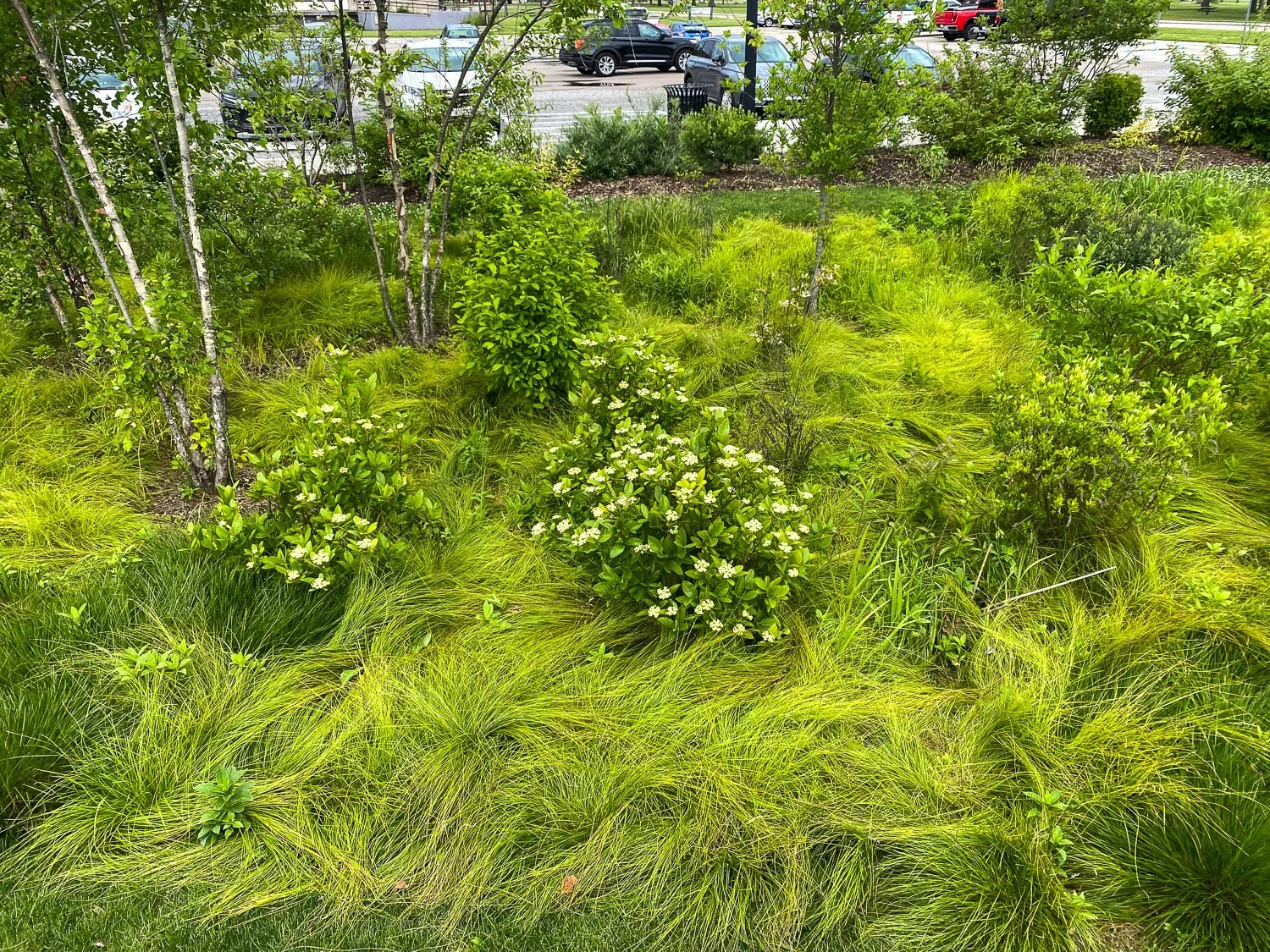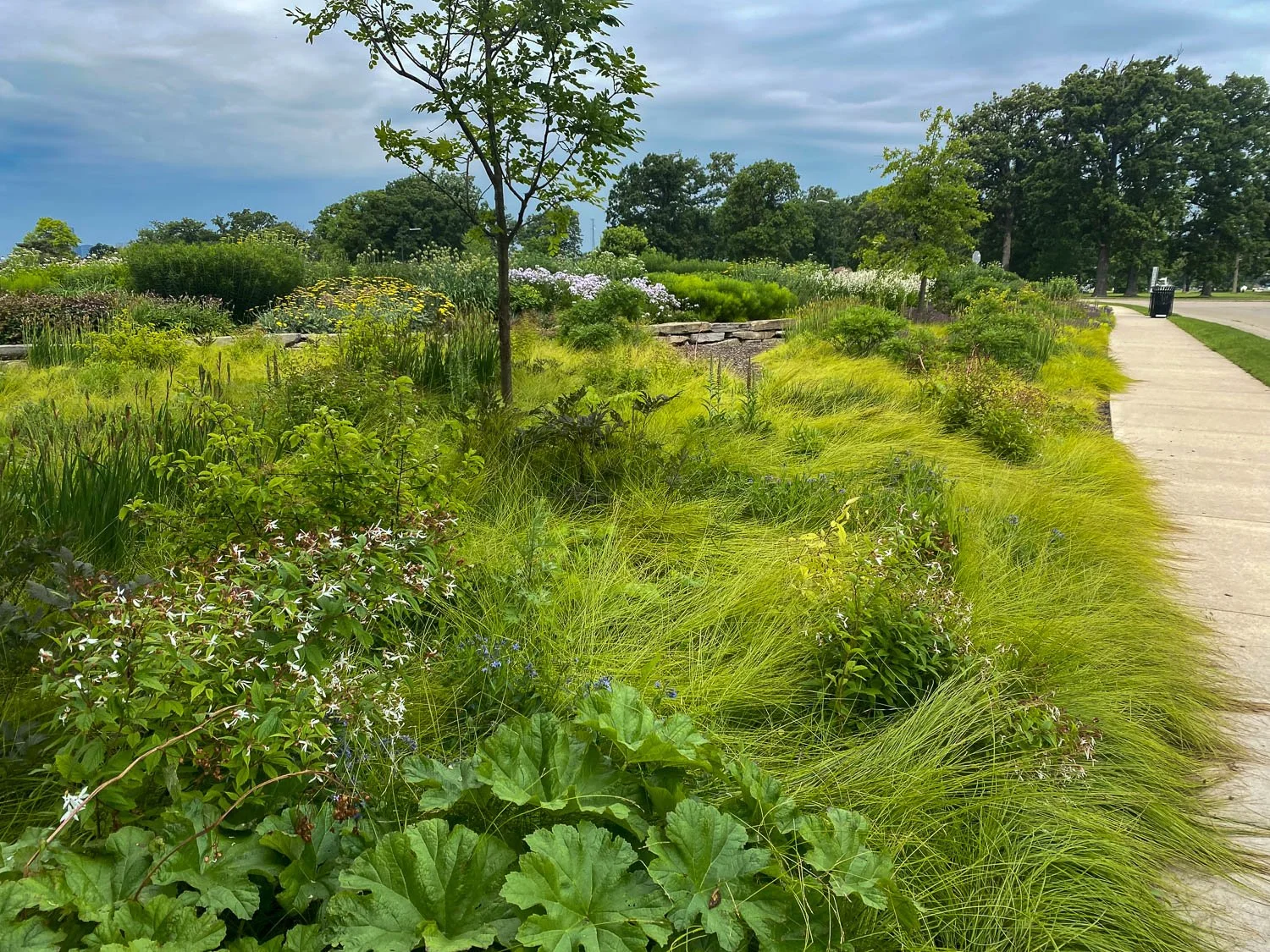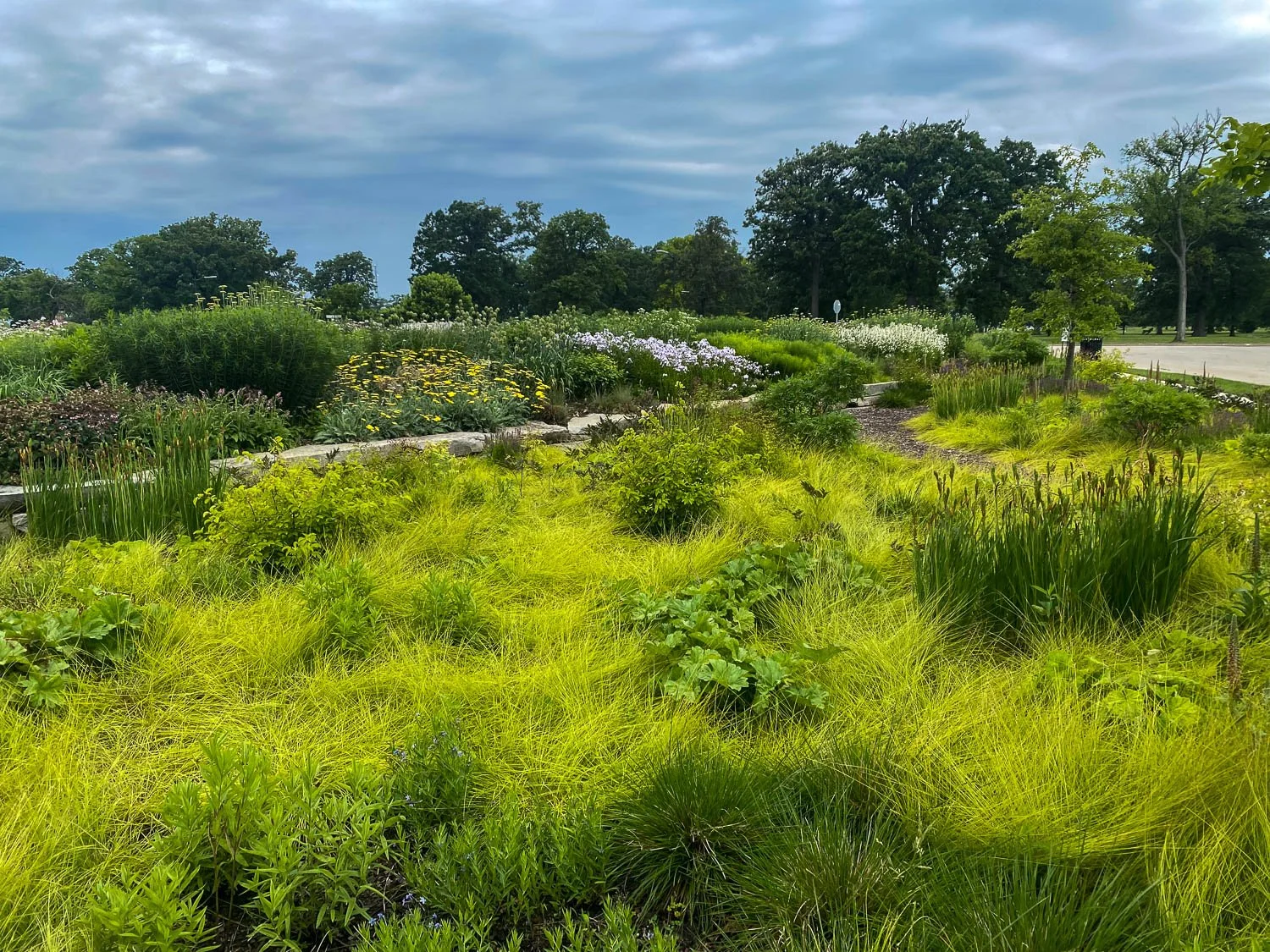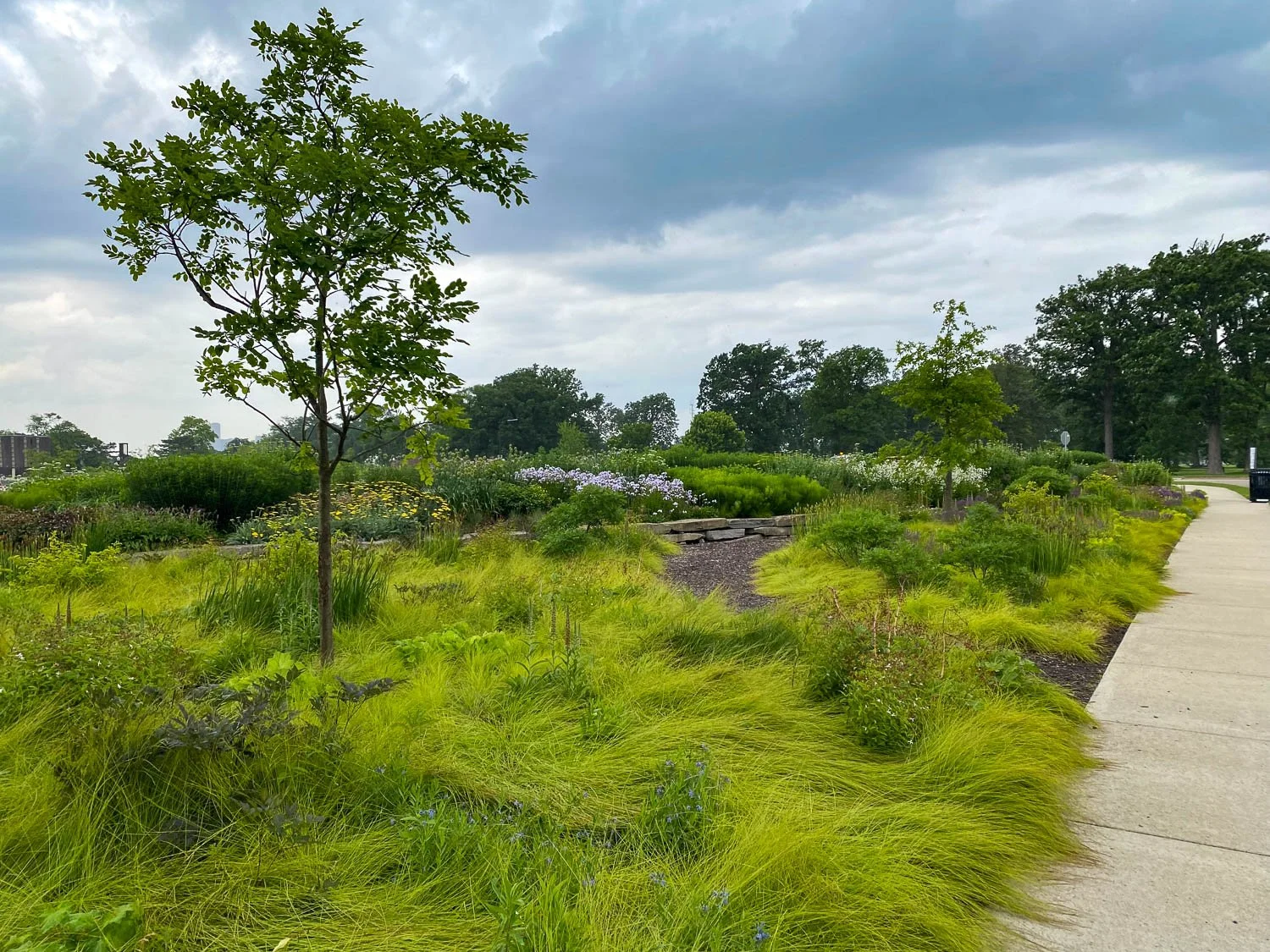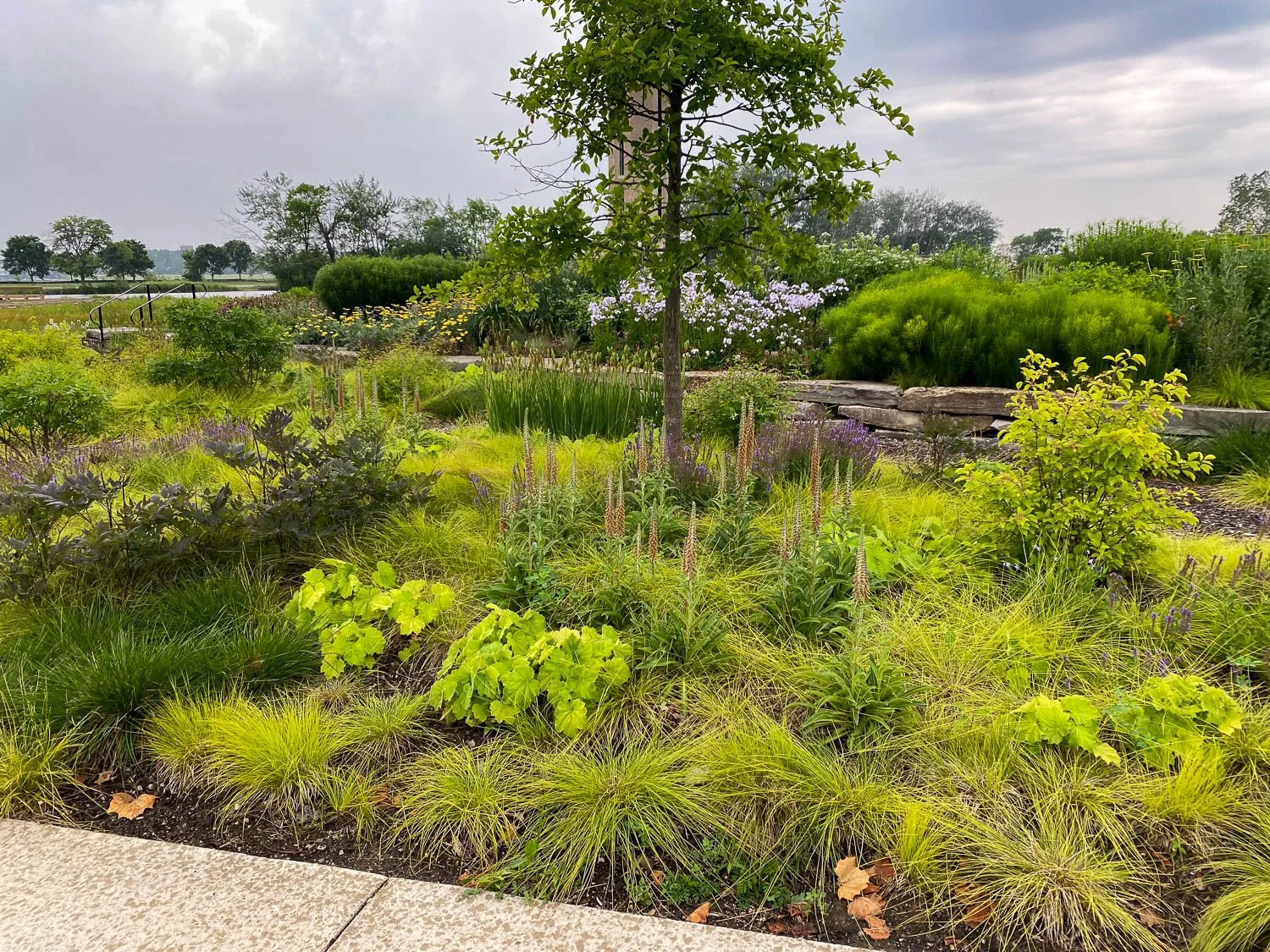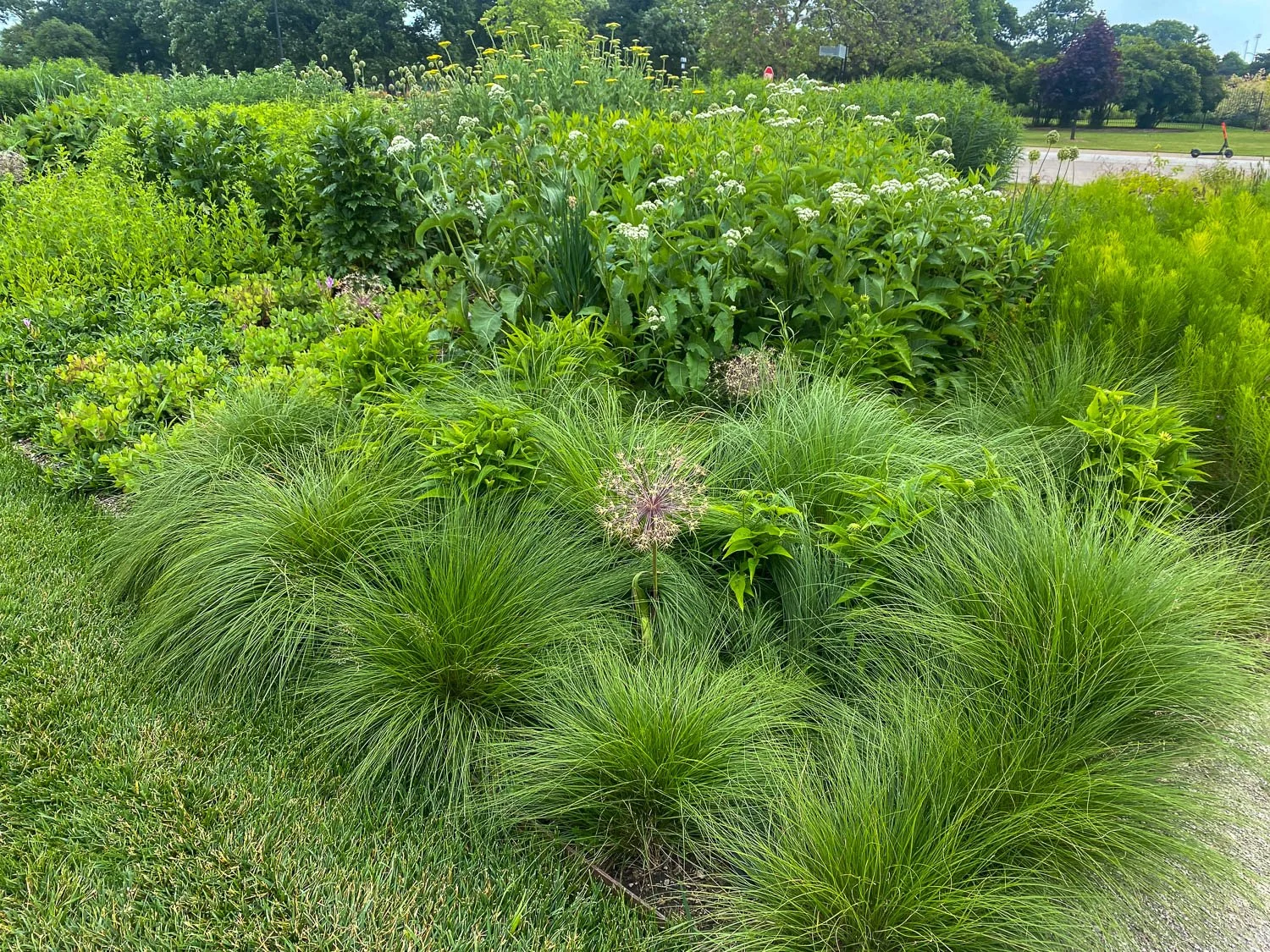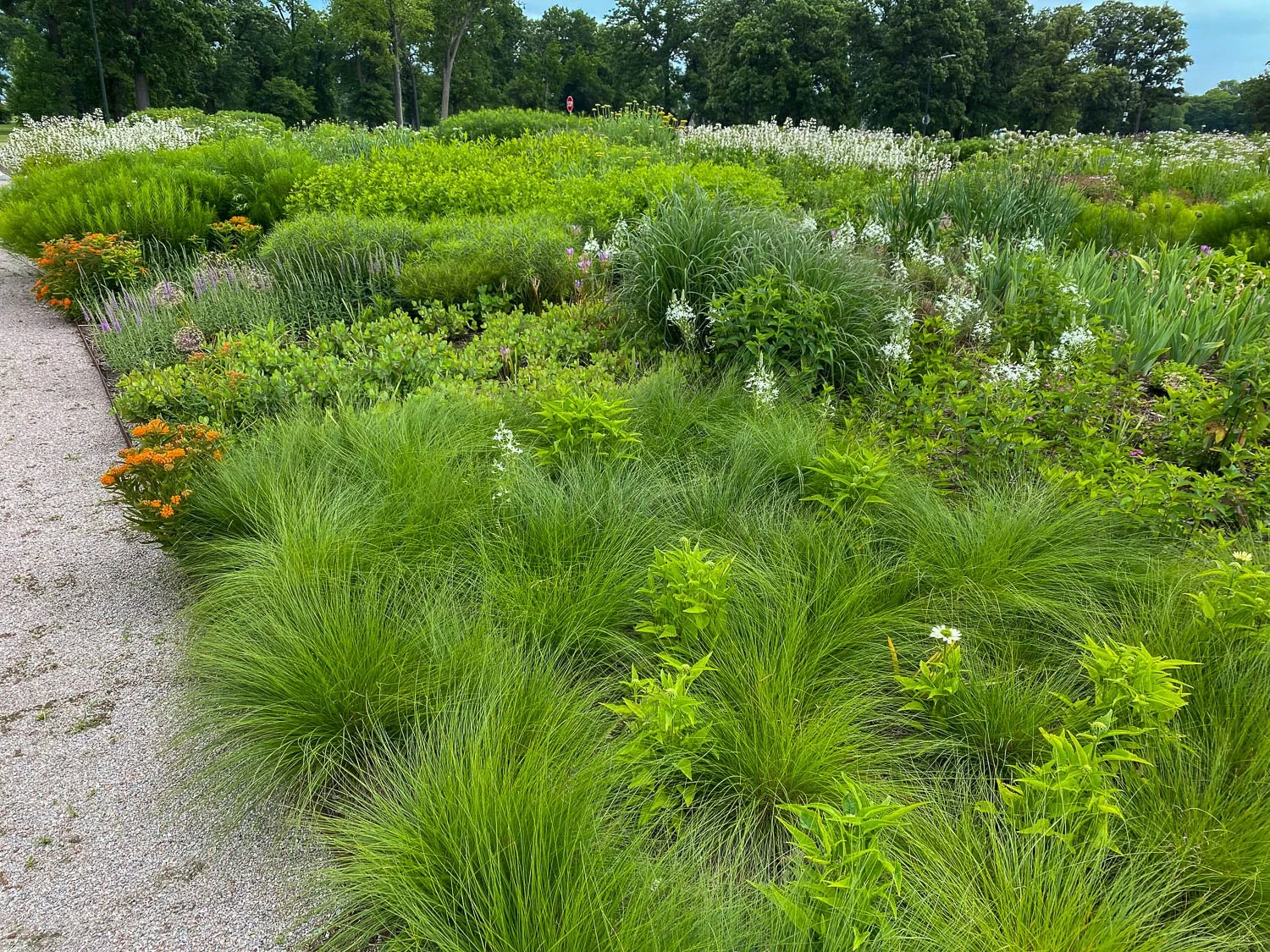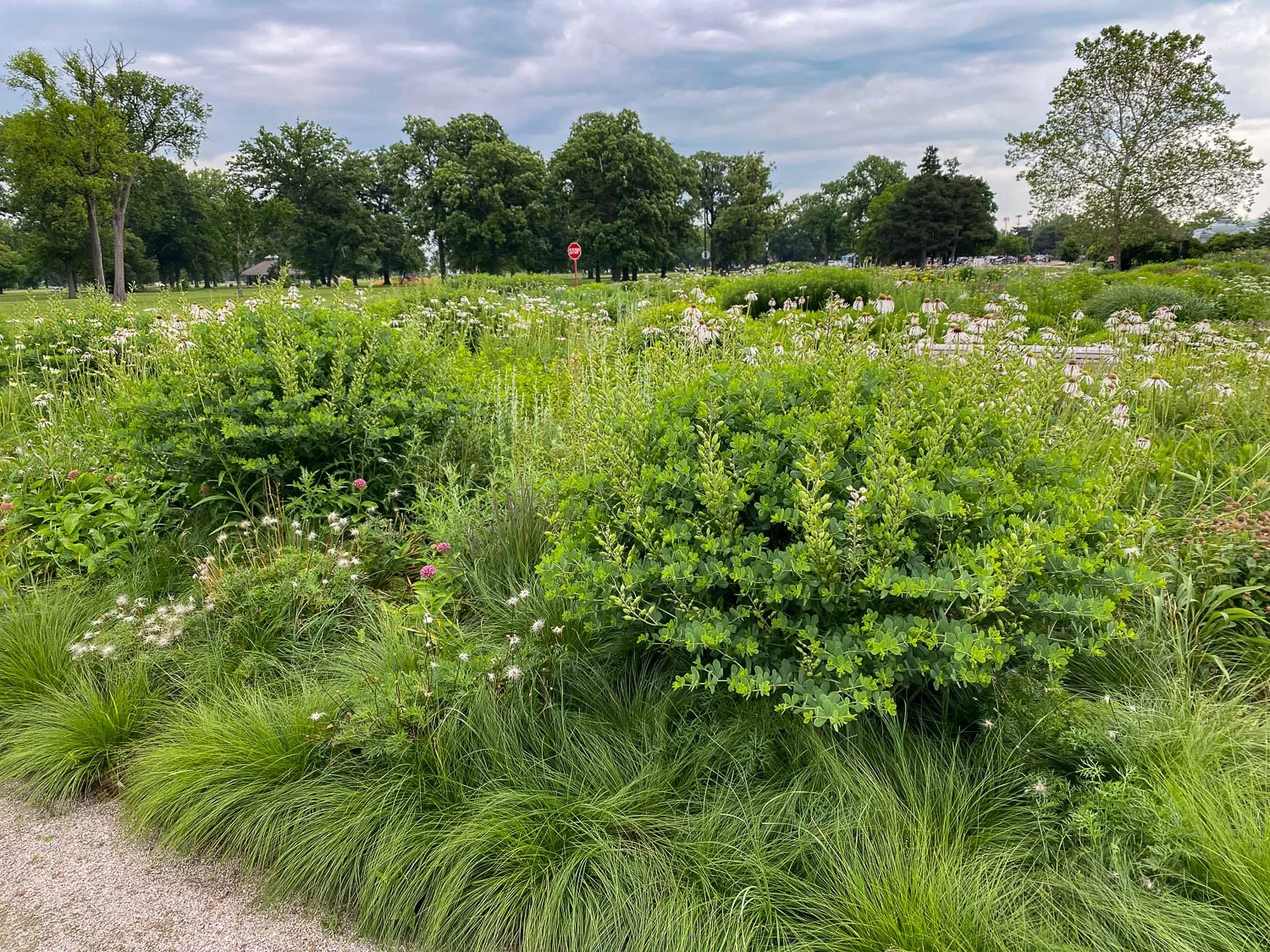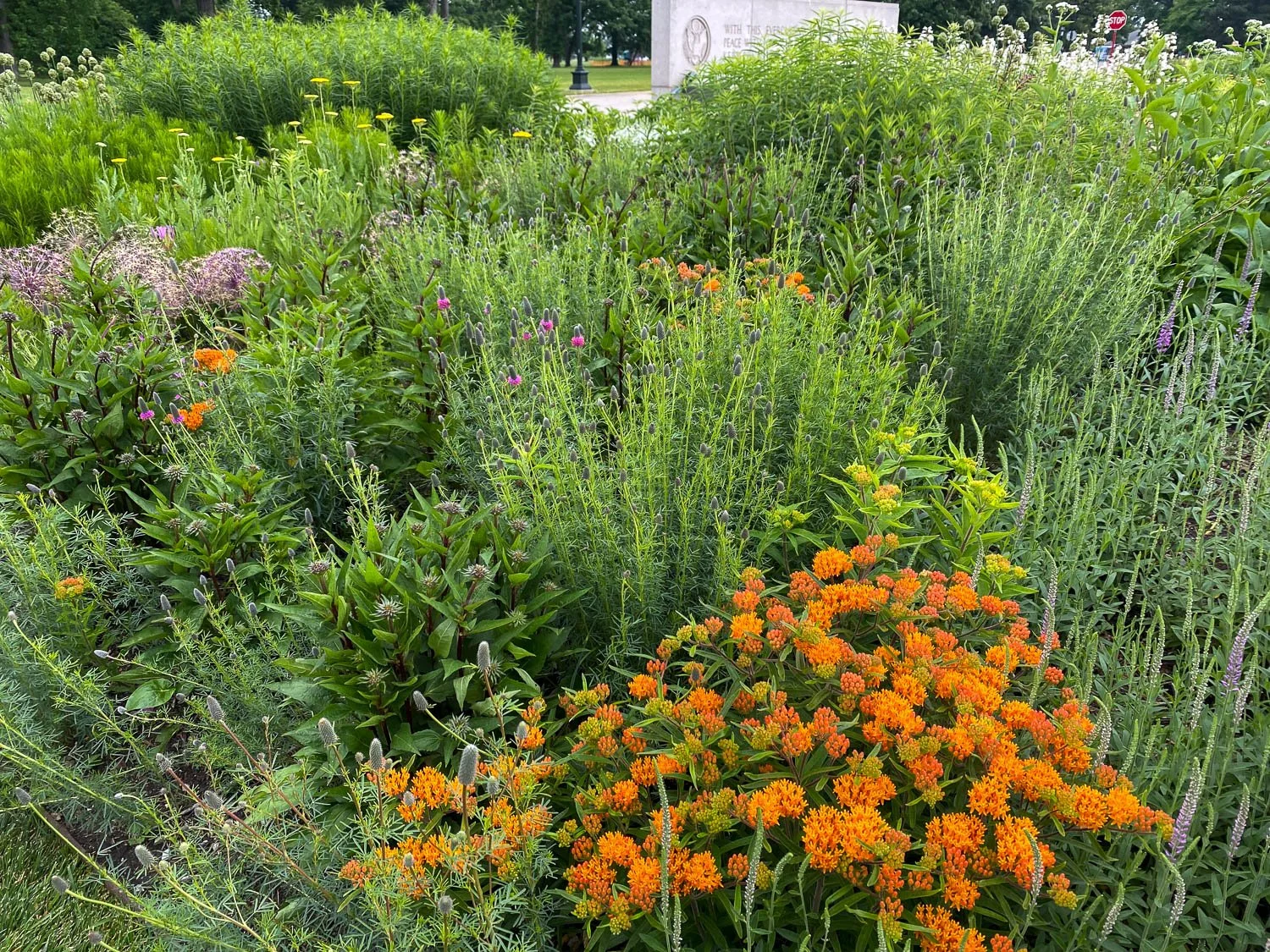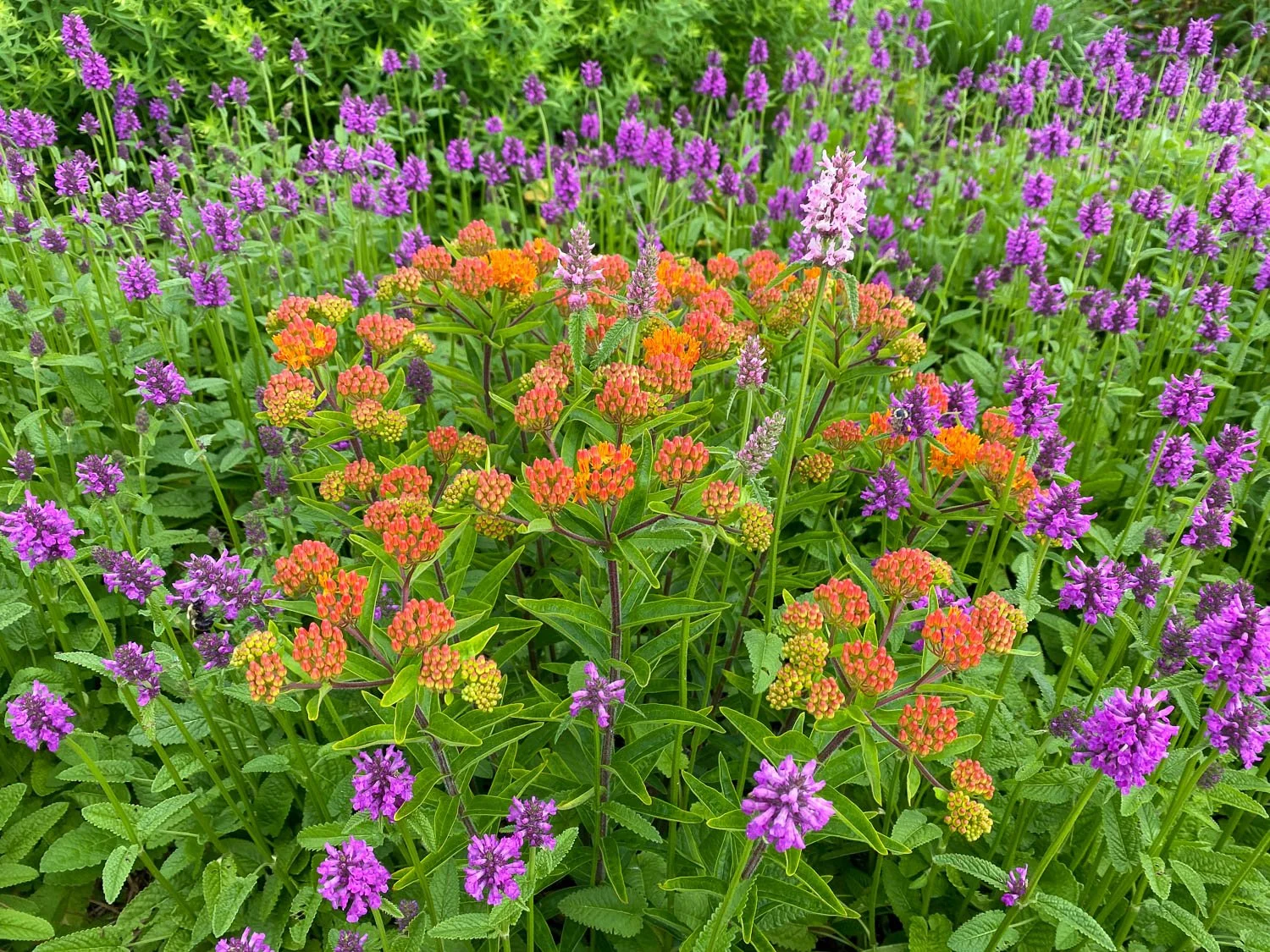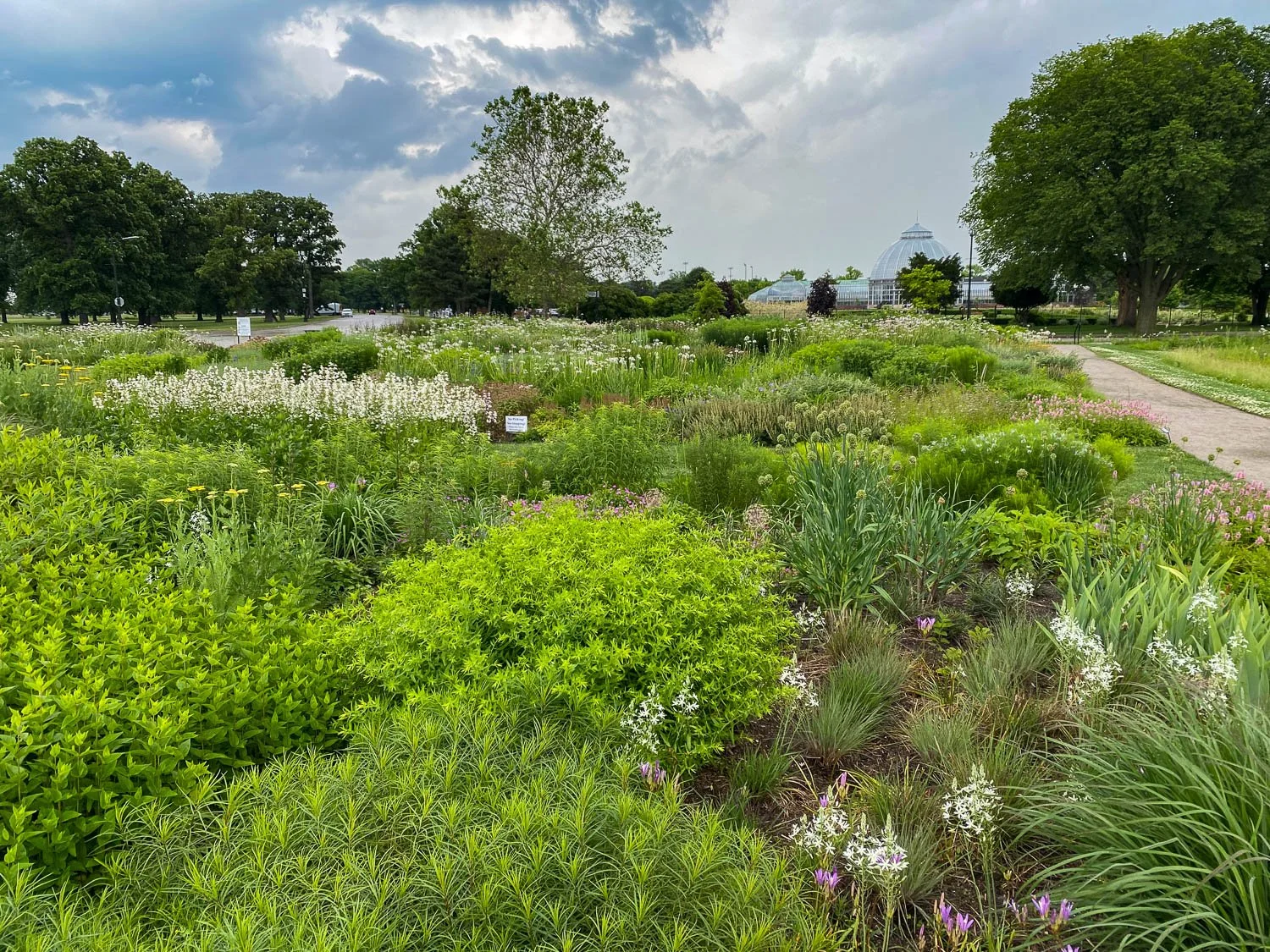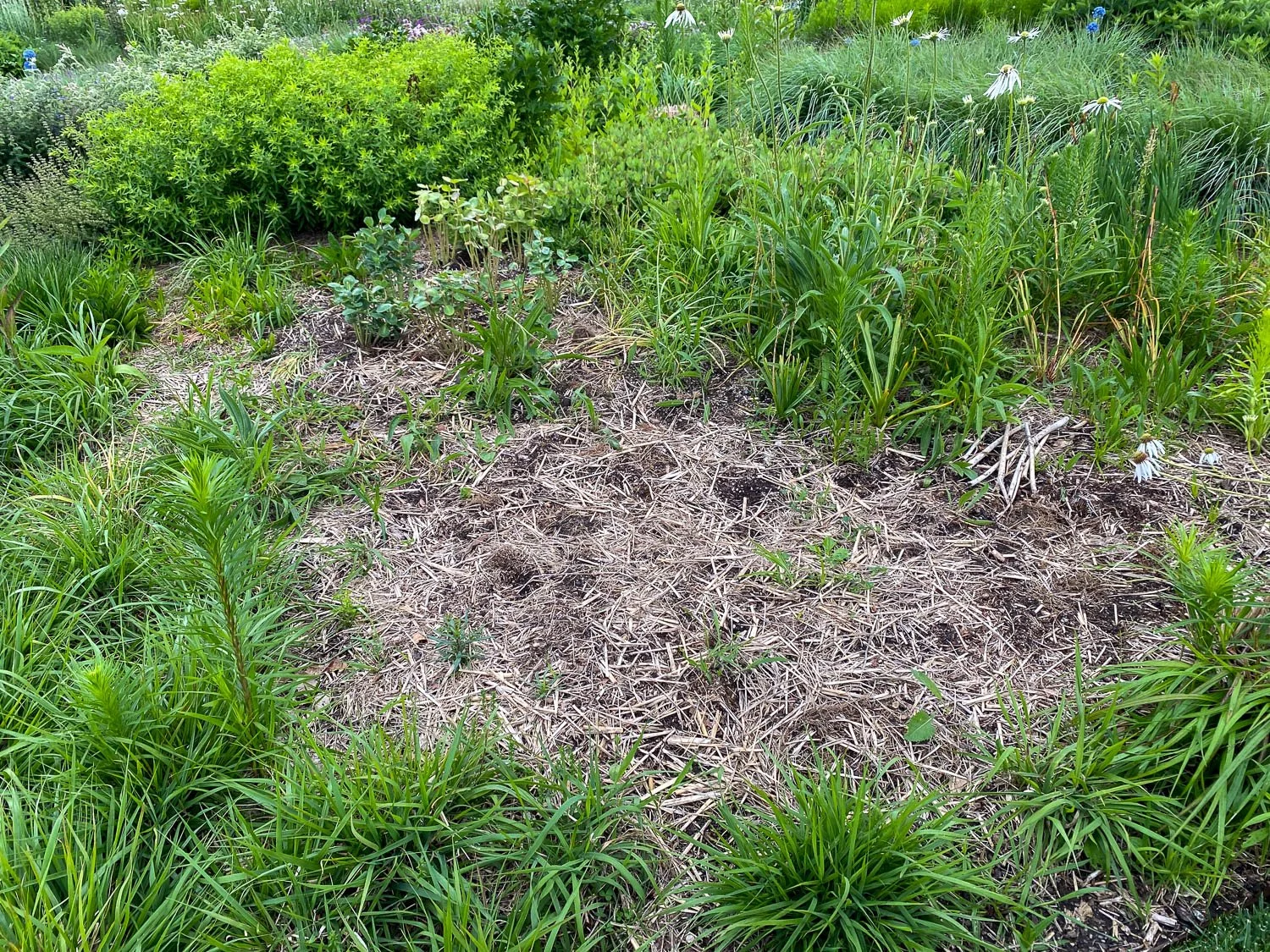“Oh, no! I forgot my camera!” I said to Karen. She was sitting next to me on the airplane some 30,000 feet in the sky as we were headed to visit her sister in Michigan. Part of the trip was to visit the Oudolf Garden on Belle Isle, but with dad brain and an early departure, putting it in my backpack slipped my mind.
“Can you take pictures with your phone?” she asked, trying to soften the blow. “Yea, I guess,” I replied.
My camera has long been my trusty sidekick visiting gardens around the world. But, leaving it behind would force me to pause and actually appreciate the garden.
We drove down on Friday, the first day of summer, to see Belle Isle with Karen’s sister’s family. Parts of the park at Belle Isle were originally designed by Frederick Law Olmsted in the late 1800’s, and after a letter from the Garden Club of Michigan, Piet Oudolf was asked to come in and put his signature on a three-acre spot some 150 years later.
We approached the garden from the east side, the side near the conservatory. It was here that we met up with my friend Lindsey Kerr, an extension agent with Michigan State University.
THE GARDEN BEDS
Upon entering the garden, the classic Oudolf style was immediately visible. Even though the garden is still young and will celebrate its 4th anniversary in August, the plantings had largely matured and filled in the space quite effectively. The long vistas provided a wonderful layered effect. From studying the designs in Piet Oudolf at Work and on the Oudolf Garden Detroit website (which I will add is one of the best public garden websites I’ve visited for identifying a garden’s plants based on plant list and interactive map), it became apparent that Piet used a simple approach in designing the space. There would be three primary planting schemes (A, B, and C) across the 15 beds, and each bed with the same letter would mostly repeat the plants. So, perhaps one could consider it to be a modular list of plants that then go into each bed.
Just inside Oudolf Garden Detroit the diversity in the beds becomes apparent.
A view of the beds looking toward the conservatory. From this perspective the turf walkways in between largely fade from view.
Repetition of plants and colors across the site helped to make the garden feel cohesive. Echinacea pallida ‘Hula Dancer’ (pale coneflower) danced across the garden, and in the distance more are visible.
One of the farthest perspectives of the garden from the conservatory.
From this angle looking toward the river you can see the pathways in between the beds where a bench allowed visitors to sit and appreciate the garden. Allium obliquum (twisted-leaf onion) provides a strong presence in this space.
RAIN GARDEN
Lindsey took me to the rain garden on the west end and showed the simple woodland grove that was planted to help filter rainwater off the road. I assumed this side to be the main entrance, and having this more verdant spot reminded me of the pond garden that one sees when entering Oudolf Field at Hauser and Wirth. Right behind the rain garden was the bird border where woody species were planted to help provide food and habitat for birds.
The rain garden looks quite verdant, and in mid-June it is more quiet than the other beds.
Carex bromoides (brome-like sedge) was used as the groundcover layer in this section of the rain garden with Viburnum nudum (possumhaw viburnum) flowering.
MATRIX PLANTING IN THE TRIANGLE BED
We made our way back across the site admiring the plants and combinations as the Red-wing Blackbirds sang their Conk-la-rees and took me back to my childhood days in Tennessee. At the far east edge where we first met up was a matrix planting in a triangle bed that we both admired. It was simple in concept and design and very effective.
The airy flowers of Gillenia trifoliata (bowman’s root) and bold leaves of Darmera peltata (umbrella plant) contrast well with the sedge groundcover.
Further into the bed irises rise out of a sea of Carex.
Lindsey and I parted ways as the rain showers started picking up. I was headed to meet up with Karen and crew, but I decided to huddle under a tree near the matrix planting as radar showed it to be quick to pass.
I noticed a volunteer mowing grass with an electric mower and asked if she knew what the Carex was that made up the matrix. She said no, but one of those green shirt people can help. They were back by the middle of the garden near the Nancy Brown Peace Carillon that towered over the site. They were leading a tour to what appeared to be one of two high school groups. I figured it wouldn’t take long to ask, but I got sucked into their story about the space.
Then, Richard Thomas who is the head horticulturist at Oudolf Garden Detroit walked up with his group. They asked the students what they had learned, and the students commented about the pollinators. Richard then started talking about the history of the site. I remembered that they had a big flood early in the development. He commented that if they had started just a few months earlier that all the plants would have likely been washed away. This flood forced them to move soil up and build up where the plants would be planted.
As I listened I realized that the group of about 20 students would be helping plant Sporobolus heterolepis plugs into the area around the carillon. This area will flood occasionally. They had goats clearing out the middle section around it, but these plants would go in a newly planted area outside. This lower riverside area had issues with invasive species, but their efforts to bring them under control had worked tremendously.
As Richard stepped aside, I caught him to say hi, introduce myself, and inquire about the sedges in the triangle bed. He told me that it was Carex bromoides (brome-like sedge) on the lower end and Carex albicans (white-tinged sedge) on the upper end.
The lower section with more Carex bromoides
The upper section with more Carex albicans
Overall, the sedges were in that post flowering stage where they tend to be more yellow in color.
Bold foliage from Heuchera villosa (hairy alumroot) and the vertical spires of Digitalis parviflora (small-flowered foxglove) contrasts well against the sedge groundcover.
SPOROBOLUS MATRIX
After I got home and started parsing through photos, I remembered that one of the patterns I noticed in the plantings was Sporobolus heterolepis (prairie dropseed) commonly used as the groundcover layer for mini-matrix plantings. It was used very heavily in the B beds, but in the A beds there would be little blocks of it. This grass would serve as the groundcover layer while other species rose out of it.
Allium christophii (star of Persia) and Echinacea foliage rises from the matrix of Sporobolus heterolepis (prairie dropseed).
In another section it was mostly Echinacea rising from the grass matrix.
I really liked this combination of the spears of Ornithogalum ponticum ‘Sochii’ (star of Bethlehem) piercing through the clumps of Sporobolus heterolepis, and it left me wondering how I could replicate this with Liatris or another species.
In this space Sporobolus heterolepis served as a groundcover near these Baptisia × ‘Lunar Eclipse’ (wild indigo). The contrast in textures really helps the Baptisia pop.
THE PLANTS OF OUDOLF GARDEN DETROIT
And, I wanted to share a few favorite plants that I enjoyed during my trip to Oudolf Garden Detroit.
This spot was one of my favorites from the visit. Sure the Asclepias tuberosa (orange milkweed) is lit, but the verticals of Dalea purpurea (purple prairie clover) and Veronica (veronica), the Allium orbs, and the rising perennial towers behind made this area so rich.
Another favorite pairing was this cool-colored section that featured Allium caeruleum (blue globe onion), Salvia sylvestris ‘Rhapsody in Blue’ (wood sage), Eryngium × zabelii ‘Big Blue’, and Geranium ‘Rozanne’ (geranium).
This combination of Achillea x ‘Moonshine’ (yarrow) and Allium christophii (star of Persia) was dynamite due to the contrasting colors and strong differences in textures.
Another pairing that I liked was Asclepias tuberosa (orange milkweed) with Stachys monieri ‘Hummelo’ (betony). But…
…Lindsey and I discussed how this Asclepias might have been a happy accident that seeded in.
Another combination that I liked was Achillea filipendulina ‘Parker’s Variety’ (yarrow) with Ornithogalum ponticum ‘Sochii’ (star of Bethlehem). The upright triangular shapes contrasted nicely with the horizontal corymbs.
This spot was quite beautiful with Echinacea pallida ‘Hula Dancer’, Asclepias purpurascens (purple milkweed), and Salvia yangii ‘Little Spire’ (Russian sage).
Here’s another spot where Asclepias purpurascens stood out. It is such an underused plant.
Blocks of Penstemon digitalis (foxglove beardtongue) punctuated the planting with their pearly white flowers.
I’m posting this photo to educate and mean it in no way to detract from the beauty and hard work of the gardeners. It seems they have the same frustration with Eragrostis spectabilis (purple lovegrass) that I do. A section of it had died out. For me I’ve learned that it’s a ruderal and just doesn’t last that long.
One last shot of the beautiful Echinacea pallida ‘Hula Dancer’.
